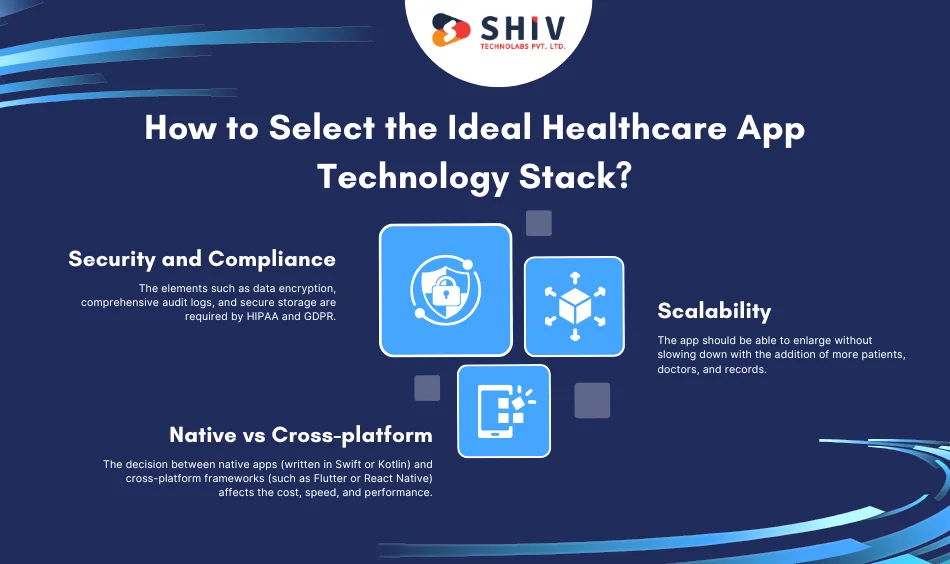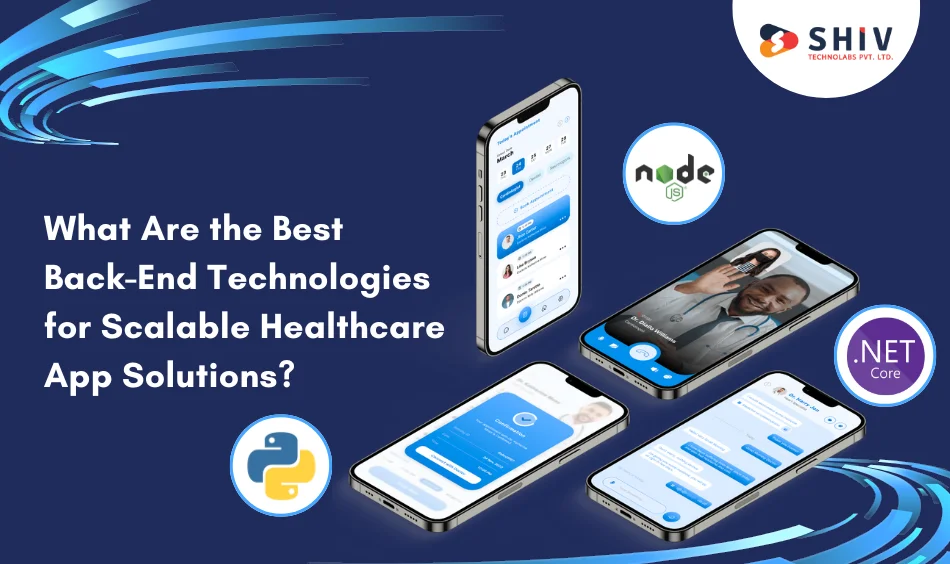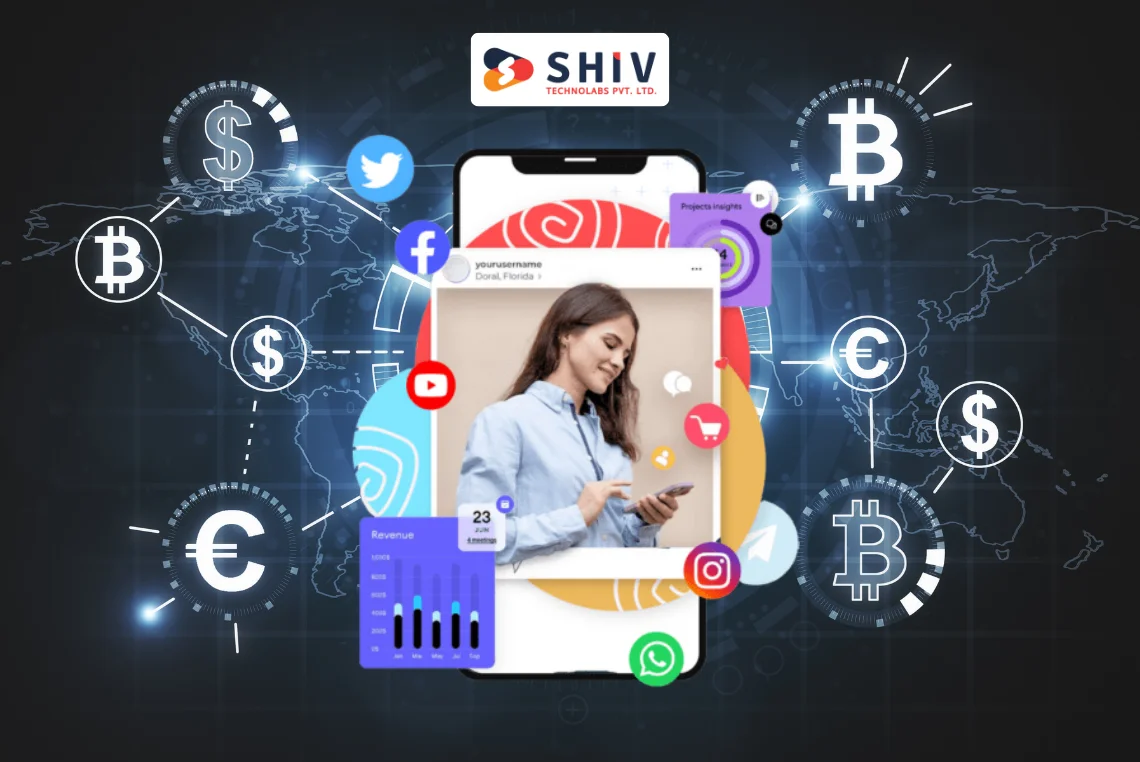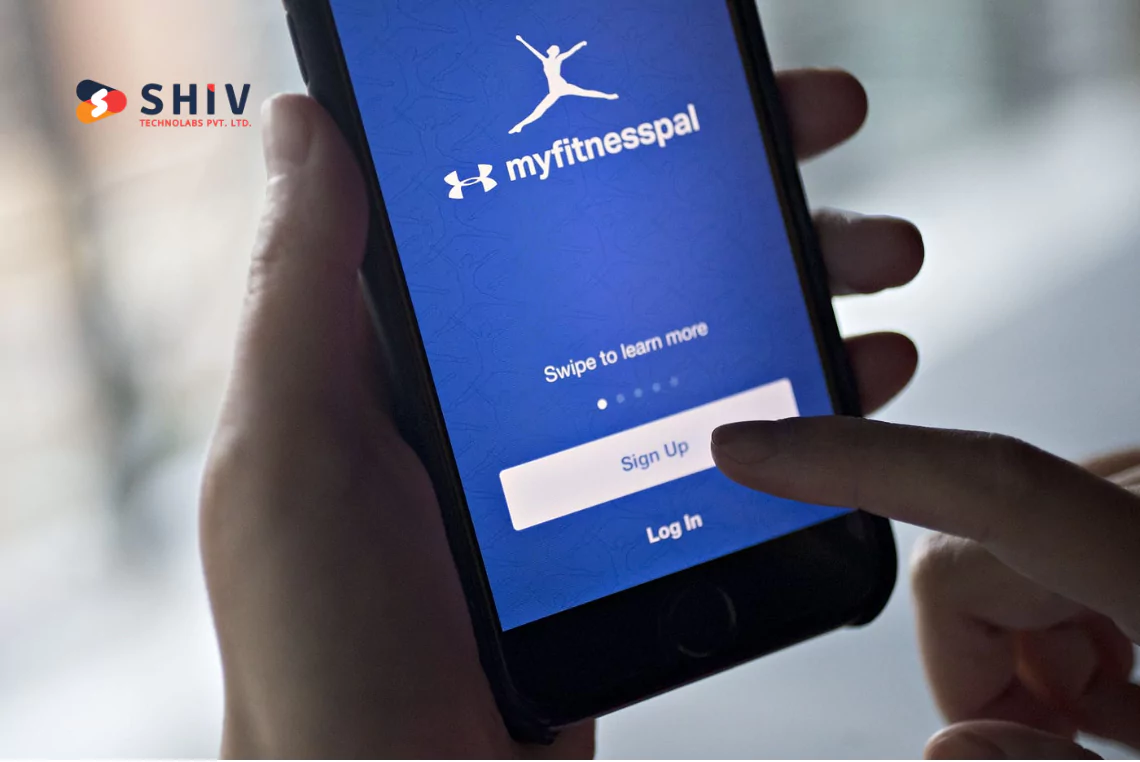Table of Contents
The healthcare sector is undergoing rapid change. Patients now expect smooth digital services, while providers demand safe platforms that scale without limits. It has been reported that the global healthcare app market is expected to reach over $86 billion by 2030. These figures showcase the growth mode of the healthcare market with more opportunities underway.
A choice of technology will determine whether your application will be able to serve millions of users or not. The correct option helps to keep medical records safe and more relevant to regulations. Misjudgment of the system can result in risks and penalties. Each one of these steps, such as design to development, has an influence on long-term growth.
When you have plans to venture into healthcare app development, this guide presents the most effective technologies and approaches to develop dependable, regulatory and scalable healthcare apps.
What Is the Best Technology for Healthcare App Development?
Developing a healthcare application is not a matter of choosing a programming language or tool. It relies on the development of an entire stack capable of providing security, user experience, and long-term scaling.
However, unlike social or shopping applications, healthcare apps operate with repeat services. Patients require medication reminder apps, monthly and subscription-based portals. Such services require systems that ensure that data is kept accurate and transactions are safe in the long term.
In eCommerce, a failed order is only an inconvenience. In healthcare, a failed record or payment can disrupt patient care. This makes healthcare technology different and more sensitive, requiring solutions that focus on compliance and reliability.
How to Select the Ideal Healthcare App Technology Stack?

A healthcare app’s tech stack must handle multiple layers simultaneously. Security, compliance, speed, and future growth should have the same attention. The following are the main points that should be considered before coming to a decision:
Security and Compliance
The elements such as data encryption, comprehensive audit logs, and secure storage are required by HIPAA and GDPR.
Scalability
The app should be able to enlarge without slowing down with the addition of more patients, doctors, and records.
Native vs Cross-platform
The decision between native apps (written in Swift or Kotlin) and cross-platform frameworks (such as Flutter or React Native) affects the cost, speed, and performance.
Which Mobile Framework Is Best for Cross-Platform Healthcare App Development?
Developing iOS and Android apps separately is more expensive and time-consuming. The cross-platform development enables the developer to have one single codebase that is compatible with both systems. In the case of healthcare, these guarantee a quicker delivery, lower cost, and a similar experience to both doctors and patients across devices.
But the choice of framework still matters. Let’s look at the most effective options.
Native Development (Swift/Kotlin)
Native apps use Swift for iOS and Kotlin for Android. They give full control over device functions and deliver the highest performance. These are often chosen for apps that need advanced accuracy, such as remote health monitoring, AR-based training, or diagnosis tools.
Pros:
- Full access to device sensors and APIs.
- Best performance for video calls, real-time health tracking, or telemedicine.
- High reliability for processing sensitive medical records.
Cons:
- Separate development increases cost.
- Building both apps takes more time.
Flutter for Healthcare Apps
Flutter, designed by Google, allows one codebase for both iOS and Android. Its structure uses widgets, making it easy to create smooth and customizable designs. This is very useful for portals, dashboards, and digital pharmacy apps.
Why Flutter works well:
- Almost native-level performance, great for real-time patient monitoring.
- A strong framework for building secure and scalable applications.
- Continuous support and updates from Google, with an active developer base.
React Native for Healthcare Apps
Meta-supported React Native is popular in the healthcare app market. It is flexible to the various healthcare requirements due to its modular design and large ecosystem of third-party libraries.
Why React Native fits healthcare:
- Faster release cycles with reusable code blocks.
- Easy connections with existing healthcare APIs and tools.
- Suitable for MVPs and later upgrades into advanced apps.
Comparison Table: Mobile Frameworks for Healthcare Apps
| Framework | Cost Efficiency | Scalability | Performance | Best Use Case |
|---|---|---|---|---|
| Native (Swift/Kotlin) | Low (two builds needed) | High | Excellent | Device-heavy or precision apps |
| Flutter | High (single codebase) | High | Near-native | Patient portals, telehealth systems |
| React Native | High (single codebase) | Moderate | Good | MVPs, flexible healthcare solutions |
What Are the Best Back-End Technologies for Scalable Healthcare App Solutions?

The back end is the engine of a healthcare app. It handles storage, data processing and secure transfers. Having a powerful back end will allow the app to serve millions without delays, maintain compliance, and facilitate the advanced capabilities of telehealth, AI, and live warnings. Choosing the wrong back end can slow performance and risk data leaks.
Here are the leading back-end options:
Node.js
Node.js is based on an event-driven framework, which is best suited to real-time services. It is compatible with telehealth calls, live chat, and instant dashboards.
Why Node.js is useful:
- Handles thousands of users at once without failure.
- Creates fast APIs for smooth doctor-patient connections.
- Reduces delays in telemedicine where time is critical.
.NET Core
Enterprise-ready solutions are required in large healthcare systems. .NET Core offers integrity, high compliance, and compatibility with Microsoft services.
Why .NET Core fits healthcare:
- Built-in safety for data access and authentication.
- Scalable design for heavy workloads in hospitals.
- Best for hospital management systems and EHR platforms.
Python (Django/FastAPI)
Python is popular for its AI tools and flexibility. With frameworks like Django and FastAPI, developers build secure and fast systems.
Why Python works well:
- Django has built-in protections for safe data handling.
- FastAPI supports high-speed APIs for IoT and wearables.
- Strong libraries for AI, analytics, and medical imaging.
Which Database Is Best for Healthcare Apps?
Databases keep patient details, records, and billing safe. The right choice depends on structure and use cases.
- PostgreSQL: Works best for structured data like patient history or payments.
- MongoDB: Handles unstructured medical data such as images or notes.
- FHIR Servers: Built for smooth data exchange between healthcare systems.
- Encryption: AES-256, tokenization, and access controls keep information secure.
What API Standards Are Used in Healthcare Apps?
Medical apps must be able to communicate with labs, hospitals, pharmacies, and patient equipment. This is enabled by API standards.
- FHIR & HL7: Used to share healthcare data across systems.
- SMART on FHIR: Allows secure app use inside hospital systems.
- OAuth 2.0: Provides safe login and authorization for users.
API Standard vs Benefit Table
| API Standard | Primary Benefit |
|---|---|
| FHIR | Easy and secure data exchange |
| HL7 | Works with older systems |
| SMART on FHIR | Safe app launch in providers |
| OAuth 2.0 | Strong authentication |
How to Choose HIPAA-Compliant Cloud Hosting for Healthcare Apps?
Cloud hosting is central to healthcare apps. It ensures both compliance and scaling across regions. The leading providers are:
- AWS HIPAA-Ready Services: Pre-built compliance tools with worldwide reach.
- Azure Healthcare API: Special features designed for hospitals with built-in compliance.
- GCP Healthcare Hosting: Adds AI and machine learning for predictive healthcare.
What Technologies Power Remote Patient Monitoring App Development?
One of the rapidly developing areas of digital healthcare is remote monitoring.
- IoT device Connectivity: Unsecured schemes such as MQTT and Bluetooth link devices and applications.
- Wearable Integrations: Apple HealthKit and Google Fit gather information through fitness trackers and smartwatches.
- Real-Time Alerts and Analytics: Real-time alerts about abnormal vital signs and in-depth insights about providers.
Conclusion
Developing a healthcare app requires more than coding. It needs careful decisions around compliance, scaling, and technology. From mobile frameworks and backends to databases and cloud hosting, every choice impacts both security and performance.
At Shiv Technolabs, we develop scalable healthcare app solutions utilising custom-built technology stacks. Our focus is on building apps that protect patient data, deliver smooth performance, and meet compliance rules.
If you want to build a secure and scalable healthcare app, Shiv Technolabs is the right partner. We combine technology and compliance to shape digital healthcare systems you can trust.
FAQs
What is the best technology for developing healthcare apps?
The ideal decision would be dependent on the purpose of the app. Secure back ends, such as Node.js or .NET Core, flexible databases, such as PostgreSQL or MongoDB, and cross-platform frameworks, such as Flutter or React Native, are good combinations.
Is cross-platform development good for healthcare apps?
Yes, cross-platform applications are cheaper and quicker to launch. Frameworks such as Flutter and React Native offer excellent performance, whereas native applications are optimised for advanced, hardware-intensive applications.
How do I make my healthcare app HIPAA-compliant?
HIPAA compliance requires encryption, access control, secure hosting, and rigorous scrutiny. The collaboration with experienced developers is a guarantee of compliance at the early stage.
Which database is best for healthcare mobile apps?
PostgreSQL works best for structured records. MongoDB is better for unstructured files. FHIR servers ensure smooth data exchange. Pairing these with encryption makes the system safe and flexible.






















